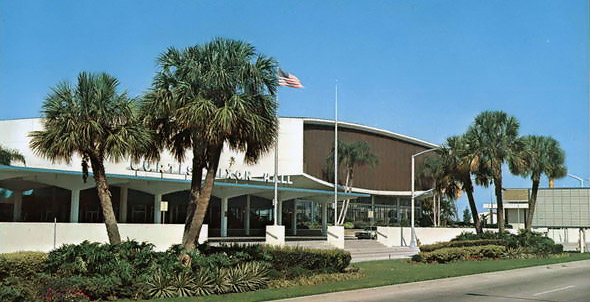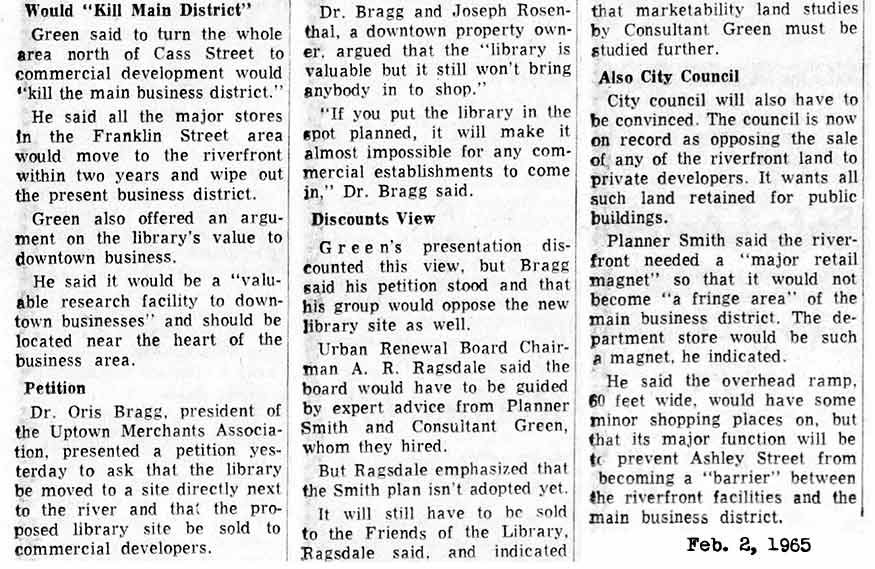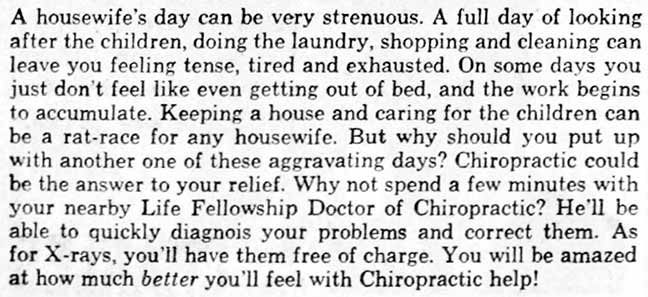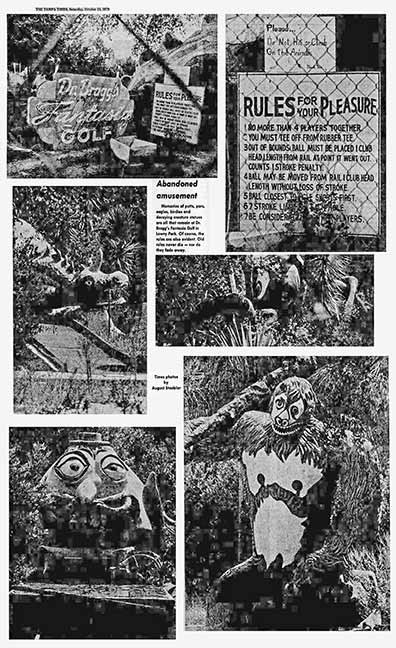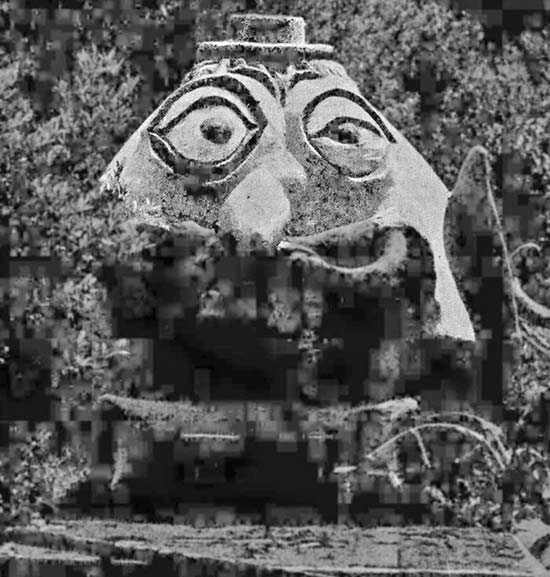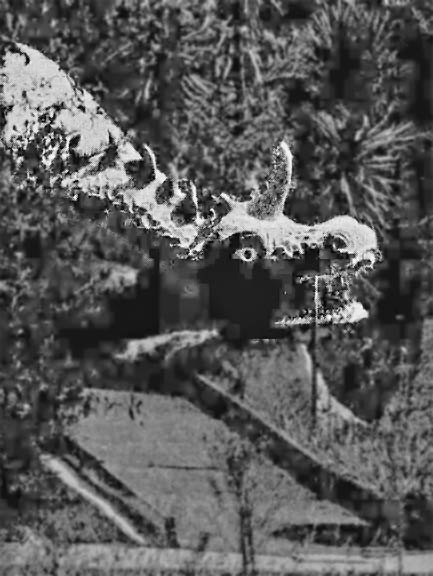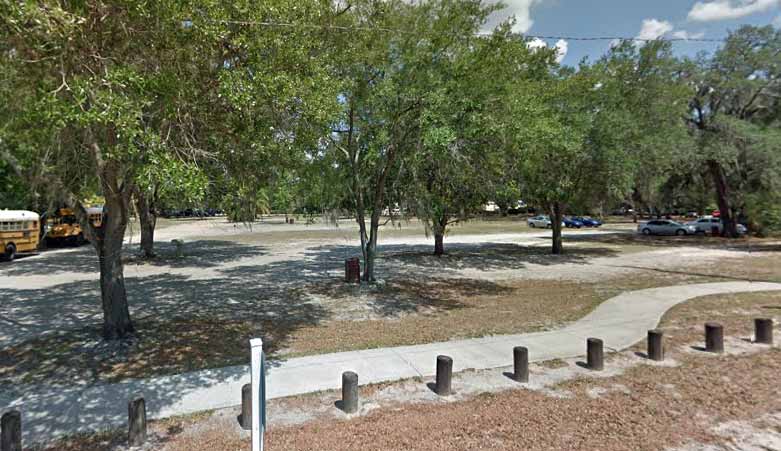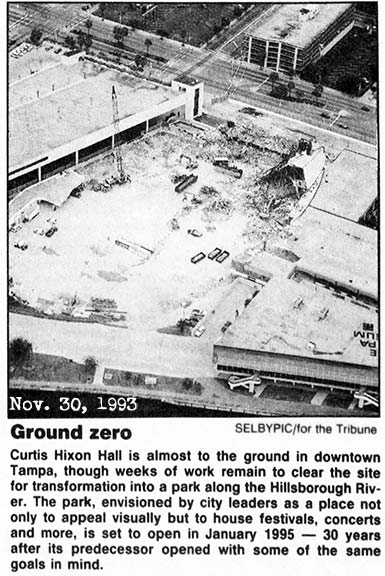|
|
|
PAGE 2 of 2
Here in the mid-1950s was another effort to clean up the "low-class bars and joints, teenage drinking and carousing, drunks, vagrants, bottles, prostitution, and human waste in the street" at the north end of Franklin St.
1955 - Nov. 2: Merchants form the Tampa Uptown Merchants Association About 30 merchants of the northern Franklin St. area met at the Chamber of Commerce building in order to promote the businesses in the area. The area, commonly referred to as "Skid Row" by locals, was bars, drunks and vagrants in those times. They formed the Uptown Merchants Association (UMA) with furniture manufacturer Harry Arkus as president, Silas G. Telander VP, Marvin Arnowitz secretary, and Dr. Bragg as treasurer. Telander stated that he was not a crusader against bars, and their purpose was not to close the bars, but added "Something must be done to clean up upper Franklin St. Women can't walk down the street without being whistled at." Another goal of the organization was to locate a new city auditorium on the riverfront between Cass and Fortune St. |
||||||
|
|
||||||
 1955 - Nov 14: Oris Bragg appointed to represent Merchants' Association The Tampa Uptown Merchants Association called a meeting to discuss the progress of the plan to improve upper Franklin St., in an effort to bring shoppers back to uptown, and the plan to locate an auditorium on Cass St. at the river. The group chose Dr. Bragg to represent them on Mayor Hixon's Site Planning Board for a new auditorium in the vicinity. |
||||||
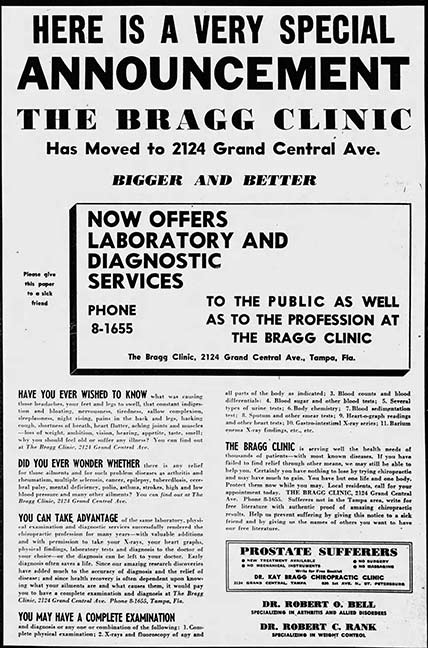
1955 - Nov. 13: During his involvement with the Merchants' Association, Bragg advertised the opening of his new clinic location with this very large ad. Click the fine print in the lower half to see it larger. Bragg had also partnered with two other doctors here--Robert O. Bell, specializing in arthritis disorders, and Robert C. Rank, specializing in weight control.
|
||
|
Rock Island, Illinois, is part of a metropolitan area known as the "Quad City" area. The Quad Cities is a region of four cities in northwest Illinois and southeastern Iowa, the states being separated by the Mississippi River. The urban core consists of Davenport and Bettendorf in Iowa, and Rock Island, and Moline, (including East Moline) in Illinois. These cities are the center of the Quad Cities Metro Area.
Not much is found in the
Quad City area newspapers about the Rock Island Chiropractic Clinic.
The most significant is that Dr. Rank was the director and on May 5,
1955 the Davenport Daily Times ran an article saying Dr. Rank set up an
"information exchange" where the public could learn about the science of
Chiropractic.
In 1956, Rank went on to be chief of staff
and director of a health spa in Punta Gorda.
|
|
1955 - Nov. 20: DR. BRAGG THE "AD-UCATOR" From his new location on Grand Central, Dr. Bragg began a series of "educational" ads in which he presented the public with a short lesson on various disorders or chiropractic topics.
|
||
|
|
|
|
|
|
||
|
|
|
|
|
1957 - Nov. 6: Now and then, Bragg found time to go fishing. |
|
|
|
|
|
1958 - May 3 Mayor Nuccio had a plan to block off Franklin St. from vehicle traffic and make it a pedestrian mall or a park area for shoppers. Nuccio's plan was to do this from Lafayette St. (today's Kennedy Blvd.) to Cass St. The UMA wanted Nuccio to extend the mall two more blocks, to Harrison St. Other officers elected by the UMA besides Bragg were Benjamin Todd as VP, Bill Johnson as 2nd VP, Harry Arkus as secretary, and Leo Guerro as treasurer. |
|
|
|
The Uptown Merchant's Association wrote this letter to Ellsworth Simmons, chairman of the county commission, reprimanding the commission for their excessive spending and calling on them to furnish the public with clear facts concerning their expenditures, along with having the letter published in the local newspapers. The UMA claimed that the City was the victim of gross misrepresentation which caused an additional burden to every taxpayer in Tampa.
|
||
|
||||
|
|
||||
|

|
1958 - Nov. 7: For his 45th birthday, forty guests attended a surprise
birthday party given by friends at the Tarnow Country House for Bragg. He
was presented with a plaque.
Nov. 1958 - Jan. 1959 ads for Tarnow Country House |
|
|

 |
| 1959 - July 16: Oris and Carmon Bragg's daughters married. Carmon Fay (19, one of the twins) married Kenneth Ford and Margaret Ann (18) married Henry Torres, Jr. in a double wedding at Sacred Heart Church. |
|
|
|
Harry Bragg, Oris's older brother, was a Spiritualist Church preacher. He was the first child of John A. Bragg and Bessie Stevenson. Harry married three times, each time to widows with children, but had no children of his own. |
|
Harry Bragg on hypnotism
|
|
1960s: The Bragg Chiropractic Clinic was your one-stop shop for just about everything that ailed you. |
|
|
|
|
|
|
|
|
1960 -
January 29: The beginnings of Fantasia Golf
A short paragraph (at right) in an article on a Tampa city council meeting gives us the first hint of Dr. Bragg's next endeavor. Though we may never know for sure what motivated Bragg to build miniature golf courses in the midst of his successful chiropractic career, we might consider that his sister-in-law's golf involvement had something to do with it, as well as his membership in the Diamond Hill Country Club, in Dover, FL. (near Brandon.) |
|
| Below are a few examples of dozens of articles mentioning Mrs. Jay or Edna Bragg that appeared in local newspapers. | |
|
|
|
| 1960 - March 25: FANTASIA LAND AT ROGERS PARK | |
|
Fantasia Golf was an enterprise
first started on 30th Street at the Hillsborough River at Rogers Park, a "Negro park"
back in the segregationist days of Tampa. Construction was in progress by March,
1960 with plans to build another one at Lowry Park.
HERE'S MUD IN YOUR EYE!
|
|
||
| The courses were being built by Tampan Dr. Oris Kay Bragg under an agreement with the City of Tampa with a percentage of the concession proceeds going to the city. The one at Rogers Park was part of an overall improvement of the park which also included a 9-hole expansion of the regular golf course in another section of the park. | |||
|
|
|||
|
|||
|
Satellite view of Lowry Park and Rogers Park
|
|
|
1960 - May 11: A preview of Fantasia for the press was held May 11, 1960 at the Lowry Park course, which was to be open to the public on Saturdays and Sundays.
|
|
|
Golfing beauties
ignore kibitzer, Tampa Times, May 12, 1960 |
|
|
Dr. Bragg's
Fantasia Golf image from circa 1960 Fairyland & Safety Village brochure.
The big Frowning Buddha at Dr. Bragg's Fantasia Golf at Lowry Park
|
|
|
|
|
| Dr. Bragg's Fantasia Golf at Lowry Park, King Kong with club, from the Jefferson High School yearbook, Monticello 1962 |
Dr. Bragg's Fantasia Golf at Lowry Park, King Kong with club, From postcard on eBay. |
|
For about a year now
a growing number of Tampans were becoming dissatisfied because so much of
Tampa's infrastructure needed repair while Mayor Nuccio (during
his first term) and Mayor Lane (to a lesser degree) were spending
too much money on the upkeep and improvement of Fairyland
and the upward spiraling cost of housing and feeding the zoo
animals. The Tribune published this article in behalf of City officials who were receiving complaints about "the city spending all that money when municipal improvements are needed." They assured the complainers that Fantasia Golf was not financed by the city and in fact, the City was making money off the venture through the lease agreement with Dr. Bragg. See the history of Lowry Park & Fairyland here at TampaPix. |
|
|
|
Horrible Henry, the two-headed dragon at Fantasia Golf, Lowry Park, circa 1970s. The last hole of each course featured an especially difficult challenge. At one of them, from the tee it was straight up a steep ramp about 8 feet long, then an elevated flat green about 3 feet high, about 8 ft x 8ft. On the far side of the platform was a huge turtle facing the tee. His head swayed side to side with his mouth wide open. If you made your shot into his mouth, it went down a pipe into a special bin on the floor in the office, so you would win a ticket for a free round. But if you missed the turtle's mouth, it rolled under his shell and off the back via a different pipe and no free game.
Free game card for
Fantasia Putter Golf, circa 1976-79. |
|
JAY BRAGG RETIRES FROM THE USED CAR BUSINESS |
||
|
Meanwhile, as Fantasia Golf was being launched, Jay Bragg was leaving the used car business. On April 16, 1960, Jay Bragg put his highly successful used car business up for sale.
|
 |
It didn't take long to sell. By June, 1930, it had become Avis Motors. Jay Bragg would move on to something new, and his brother would join him.
|
|
|
||
|
Trampoline craze spreads across the country Bob Robinson and his wife, of Burbank, California, became interested in trampolines in the mid 1950s so they installed one in their back yard. He dug a pit the size of the equipment and installed it so the surface would be at ground level. Along with his brother Jess, they became more interested in it as a business, and by 1960 there were several trampoline centers in the area. Then it spread like wildfire across the country, and by the spring (no pun intended) of 1960, it came to the ears of Jay Bragg.
|
The selling of the opportunity to start such a business was just as much of a craze as starting a trampoline center itself. So Jay Bragg seized on the craze and advertized to "get in on the ground floor" with "America's fastest growing sport." He repeatedly posted this ad dozens of times in the business opportunities section.
|
||||||||||||||||||||
|
Meanwhile, Oris continued promoting his
Chiropractic wonders for his Grand Central Ave. clinic. But he
couldn't help keeping an eye on the success of his brother in the
trampoline center sales.
|
 Jay Bragg set up shop at 4608 S. Dale Mabry, where he started a trampoline center. |
||||||||||||||||||||
|
|||||||||||||||||||||
|
|||||||||||||||||||||
 |
|
|
DR. BRAGG'S FANTASIA GOLF ADVERTISING In the first four years after opening Fantasia Golf, Dr. Bragg would place hundreds of ads, mostly coupons. There was one almost every day. Below is a sample from the earliest at upper left, to later at lower right. |
|
|
|
|
|
|
|
|
1961-May 18 BRAGG TESTIFIED AT THE MURDER TRIAL OF PHOTOGRAPHER WILLIAM V. "RED" ROBERTSON OF ROBERTSON & FRESH |
|
|
|
|
|
|
|
|
|
Concept-Therapy is an educational organization dedicated to teaching a correlation of the universal laws of life for creating health, happiness, peace, and success: Body-Mind-Soul. |
|
Born in 1931 out of the traumatic WWI experiences of Dr. Thurman Fleet, who could not find solutions to his challenges from traditional medicine and theology, what is known today as Concept-Therapy has evolved into a non-profit educational organization. Grounded in philosophical principles that trace back centuries, Concept-Therapy is a unifying correlation of the fundamental disciplines (Science, Metaphysics, Theology, Psychology, Sociology, and Philosophy). It has been taught continuously at its San Antonio Campus for nearly seven decades, where it has proven itself a viable, workable understanding of living a whole life. Over the course of this remarkable tenure, Concept-Therapy has provided an anchor of support for 1000’s of people aspiring to a life of health, happiness, peace, and success and is now taught in locations across the United States and Canada. |
|
|
This ad ran continuously from January 5, 1964 through April 12, 1964, at which point there were no ads at all for Bragg's clinic until Jan. 18, 1967. |
|
In early April the board of the city parks department decided against any further commercialization in city parks when it turned down the plan to put a tourist attraction in Rowlett Park. Mayor Nuccio was criticized for appearing to lend support to the private venture at Rowlett, but the board's study of the idea showed that some were "irked over commercial ventures placed in parks under former Mayor Julian Lane." (Lane was Tampa's Mayor from 1959 to 1963 and was preceded and succeeded by Mayor Nick Nuccio.) The board wanted to get rid of Fantasia Golf at both Lowry and Rogers Park but Bragg's lease would have made it difficult.
It was said that Fairyland had become more of an amusement park with concessions and thrill rides than a peaceful public park for restful leisure time and the "greatest expansion of concessions and rides occurred under Lane." |
|||||
|
|
|||||
 Dr.
Bragg's son-in-law, Richard Escobio (husband of Nina Kay Bragg), drowned
in Lake Lena. Dr.
Bragg's son-in-law, Richard Escobio (husband of Nina Kay Bragg), drowned
in Lake Lena.Below is his May 1956 photo from Jefferson High School graduates.
|
|||||
|
CURTIS HIXON CONVENTION CENTER |
|||||

1964 - June: During Bragg's silence in the papers, the City of Tampa experienced a major development boom along the riverfront during the 2nd term of Mayor Nick Nuccio.. The Uptown Merchants Association saw part of their dream being realized when construction began on a new $4.2 million convention center. The plans were unveiled on Feb. 14, 1963. But from that point on, the Press rarely got the name right. |
|||||
|
|||||
|
|
|||||
|
|
|
||||
|
|
|
||||
|
Apparently, Chapman had no say-so in the signage for the building as seen below.
|
|||||
|
Click each area to see larger image, then click AGAIN to see full size.
|
|||||

|
|||||
|
|
|||||
|
1965 - Feb 2: The scent of development in the water brought forth a shark-like feeding frenzy. Not less than a week later, a plan was on the table to show how the future library could be relocated so a huge department store could be built in the heart of the new riverfront.
The proposal to move the future library site on the design plans from the Ashley Drive frontage of the riverfront development was dealt a strong setback when Economic Consultant Lawrence Green of Hammer Co. and Assoc, Atlanta, said the move would kill the main district. He said all the major stores would end up moving to the riverfront district within two years and wipe out the present business district. Green also argued that the library was a valuable research facility to downtown businesses and it should stay in the heart of the business area. Below shows the proposed changes to accommodate the new department store and parking, along with possible future location for a music hall. Place your cursor on the image to see the area today. Mr. Green's advice was basically ignored and the library site moved further south along Ashley.
|
|||||
|
DEMOLITION OF CURTIS HIXON CONVENTION CENTER CONTINUES FURTHER BELOW |
|||||
 1967 - CHIROPRACTIC ADS BRIEFLY BEGIN, THEN END After nearly three years of not a single ad for his Chiropractic clinic, or anything relative to it, Bragg's clinic returned to the newspapers with this ad. It was repeated almost daily through May 29, 1967. Then once again, Bragg's ads ceased, this time for about three months
|
|
|
|
After around three months
of no ads for his clinic, on Sept. 10, 1967 his clinic appeared among
others listed in this ad by Life Fellowship of Florida.
|
|
|
A week later, on Sept. 17,
1967, a similar ad was placed by the Life Fellowship of Florida.
This is the last ad could be located which mentions Bragg's chiropractic
practice. It appears that he has retired.
|
|
1967 - Feb. 13 - Fantasia on the decline NOTE: The absence of articles doesn't necessarily mean there were none. Not every daily issue of the newspapers were available from newspapers.com. There were also some repeated want ads by manager Henry Torres, Jr., Oris Bragg's son-in-law, for concessions help, in April and August of 1967, and again in 1968.
In August of 1969, this ad for a caretaker:
This list (below) of attractions at Lowry Park ran all year up until this last one on Sept. 10, 1973
|
1967-
June 18: Fantasia at Rogers Park At this point, it appears that Dr. Bragg has retired from his chiropractic practice. The next mention of Dr. Bragg, other than the periodic publishing of residents' property taxes in the legal section, is a very brief one, in an article about the 18-hole full-size golf course at Rogers Park. By this time, a young Dick Greco is the mayor of Tampa, having taken office in 1967 after defeating Nick Nuccio who was serving his second term as mayor (non-consecutive.). The article says four different individuals or groups were interested in taking over the city-owned full size golf course at Rogers Park, proposing to "spruce it up" and possibly increasing the profit the city could realize from it. Greco even went on a golfing tour of the course with one group and was convinced the course needed improvements, especially to the watering system. Reference is made to the "old putting course that Dr. Bragg operated for several years."
|
|
1973 - Oct 10: Rick Truett won a trip to the Bahamas by scoring a 38 in Fantasia's putter tournament. No promotions could be found in advance of it, nor any future contests, including the next one mentioned for Nov. 10, 1973.
|
|
|
|
1978 - Jun. 25: Oris Bragg's mother, Elizabeth Bessie (Stevenson) Bragg Steward, died on June 25, 1978 in Tampa. Apparently, she had remarried after the death of her husband, John Auford Bragg. In the June 30, 1958 obituary of Bessie's sister, Mrs. Alvia Stevenson Moseley, Bessie is listed as one of two surviving sisters, Mrs. Bessie Steward. So John A. Bragg probably passed away by this time.
|
|
For relationships and more about the Bragg family, see the Bragg Family Tree here at TampaPix |
|

|
ABANDONED AMUSEMENT Memories of putts, pars, eagles, birdies, and decaying creature statues are all that remain at Dr. Bragg's Fantasia Golf in Lowry Park. Of course, the rules are also evident. Old rules never die - nor do they fade away. |
|
Times
photos by August Staebler |
|
Death of Dr. Bragg and his wife Carmon |
|
|
Dr. Bragg passed away on
Nov. 19, 1984. He was past president of Tampa's Uptown Merchants
Association (not Downtown.) His membership in the Diamond Hills
Country Club indicates he was into golfing and it probably is the reason
he had the idea to build Fantasia Golf. In his obituary appears
that his daughter, Nina Kay Escobio, married to a Mr. Leigh after the Sept. 20, 1964 drowning of her first
husband, Richard Escobio. It appears that his daughter
Margie Ann Torres has also remarried, this time to a Mr. Dearing.
|
Oris's wife, Carmon (Deese) Bragg, passed away on Mar. 4, 2002. After Oris's death it looks like she moved from Brandon to New Port Richey to live with or be closer to her daughter, Carmon Fay Ford. Her daughter "Marche" is a typo, she was Margaret Ann and it appears that she married for a 3rd time; to Mr. DeCilio of Seminole. Nina Kay also seems to have married a 3rd time, now to a Mr. Parham of New Port Richey.
|
|
|
Photo by
Mary at Find-a-Grave. |
FANTASIA GOLF - THE BIG PICTURE
|
The aerial image at right
is a 1969 view of Fantasia Golf and Safety Village overlaid on a 2017
view of the area. Place your cursor on the image to see those 1969 areas as they appear present day.
All traces of Fantasia Golf are gone and the property is now a parking area for Lowry Park.
|
|
|
|
|
|
CURTIS HIXON IN ITS PRIME In its prime from the 1960s to the early 1980s CHCC was host to thousands of events. The main hall could be reconfigured and subdivided to accommodate many different types events. It had a maximum capacity of about 8000 in a concert setup. It hosted concerts and sports, conventions and trade shows, large community events such as New Year's Eve dances and Gasparilla-related festivities, and political events, such as a large 1968 campaign rally for presidential candidate Richard Nixon.
A popular show, "Holiday On Ice" was the first traveling show to appear at Curtis Hixon. The hall was the venue for hundreds of established as well as up-and-coming performers. During the early years, only a handful of the biggest concert shows played at the much larger Tampa Stadium. Many of the top musical performers of the era played at Curtis Hixon Hall, including Bob Dylan (both solo and as part of the Rolling Thunder Revue, The Who, the Grateful Dead, Creedence Clearwater Revival, The Monkees, Chuck Berry, Led Zeppelin, Jefferson Airplane, Johnny Cash, Elton John, Black Sabbath, Sly & The Family Stone, The Jackson Five, Eagles, Santana, Bob Marley and The Wailers, The Beach Boys, KISS, ZZ Top, Hank Williams Jr., The Isley Brothers, Van Halen, Tom Petty and the Heartbreakers, Rush, The Kinks, Talking Heads, Dire Straits, U2, and Stevie Ray Vaughan, among many others. One of the most notorious performers was Janis Joplin who was arrested and booked in 1969 by TPD for using vulgar and indecent language. See a listing of CHCC concerts at Concert History of Curtis Hixon Hall Tampa, Florida, United States | Concert Archives. The first sporting event in the new facility was a boxing event held on February 15, 1965, and it hosted many subsequent boxing and wrestling cards throughout its lifetime, including a nationally televised 1971 light heavyweight championship bout between Bob Foster and Ray Anderson. Other notable fighters appearing at Curtis Hixon Hall included Ernie Shavers, Emile Griffith, José Roman, Vicente Rondón, and Maurice Watkins. Curtis Hixon Hall also hosted many basketball games. It was the first home court of the University of South Florida's men's and women's basketball teams and the ABA's Floridians, and it was also used for high school basketball games and tournaments. 1993 - July: THE DEMISE OF CURTIS HIXON CONVENTION CENTER Tampa Mayor Sandy Freedman has a vision of the Florida Orchestra playing from a barge in the Hillsborough River. The mayor and city council agreed to demolish Curtis Hixon Center and build a riverfront park, with Mayor Freedman saying "Great cities all have this kind of green space; the citizens of Tampa are winners on this one." The city council vote was unanimous, but two longtime Tampans did not agree. Sam Mirabella said tearing down Curtis Hixon "would be a shame." The building was now worth 10 to 15 million dollars. "Groups that promote tourism could use it...creating a park will attract vagrants" he added. Mayoral candidate Edward T. Young said that the building was named for a former mayor, and demolishing it would be "an insult to his memory." |
||
 |
|
|
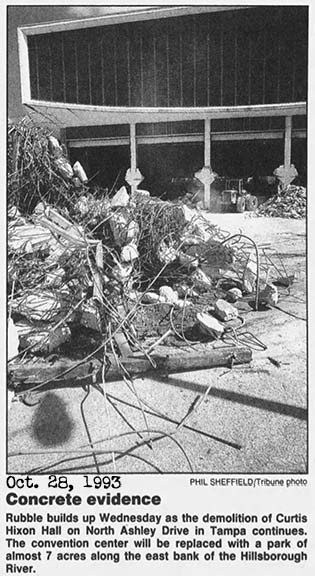

At right: Dec. 1, 1993
|
|
|
|
|
|
|
Chirobase: Your
Skeptical Guide to Chiropractic History, Theories, and Practices
Operated by Stephen Barrett, MD, and Samuel Homola, DC
Chiropractic Puffery from the 1950s
A look at Chiropractic advertising in the 1950s
Safety Village / Children's Museum / Kids City
Dr. Bragg's Fantasia Golf Page 1 Page 2 Bragg Family Tree










 ABOUT
THE "NATIONALLY KNOWN" ROCK ISLAND CLINIC
ABOUT
THE "NATIONALLY KNOWN" ROCK ISLAND CLINIC














































 1960
- May 13:
1960
- May 13: 


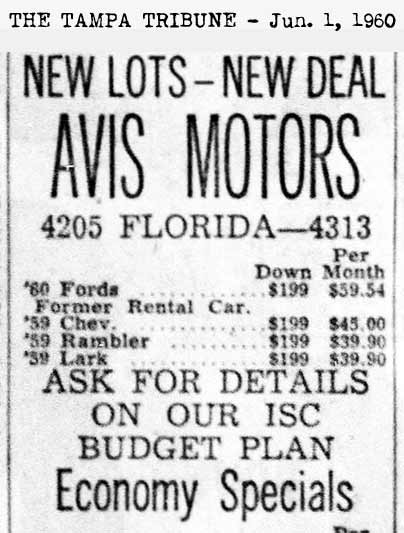





















 1964
- April: Anti-commercialization sentiment threatens Fantasia closure
1964
- April: Anti-commercialization sentiment threatens Fantasia closure













